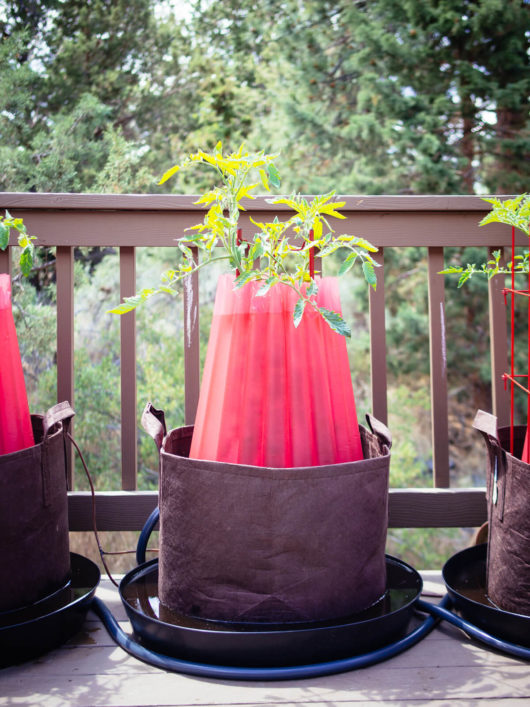
I'm going into my fourth season in Central Oregon soon, but only my first as a gardener. (Side note: Whoa, eight months already? Where has all that time gone?!)
If you've been following me since my move from Los Angeles to Bend last fall, you might remember that we're currently in a rental home while we continue to explore all the neighborhoods here and settle into our new town. (Which, by the way, has been an absolute blast. You can see some of our local adventures on my Instagram, and I'll be following up this post to answer some of the most frequently asked questions I've received since the move.)
We were fortunate to find a lovely property on a sprawling half acre to rent, but the fact that our lease ends in a year means we haven't done much by way of building a garden. We won't be adding raised beds or erecting deer fences, or seeding wildflowers or planting bulbs. All of the work in the yard has revolved around our chickens, but even their enclosure is temporary.
Nonetheless, I couldn't let this beautiful spring season pass without planting something, so I decided to start an edible container garden on the second-story deck of our house. It's a small deck (about 15 feet x 15 feet) and the container garden even smaller (just a few planters in the corners), so it's far from the garden I'm used to having — but something is better than nothing!
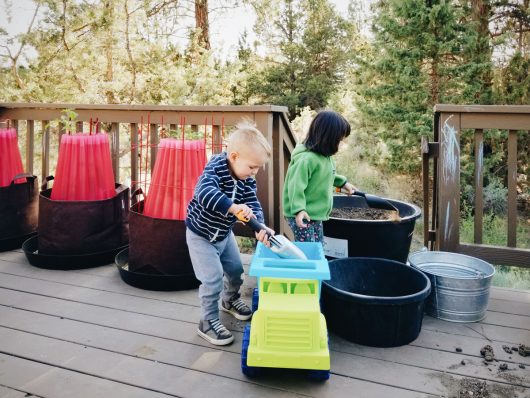
(How cute are my little helpers?)
Having the garden on the deck meant it would be protected from deer, voles, yellow-bellied marmots, and other pests that are new to me in this region. (I actually think yellow-bellied marmots are adorable and I kind of wish they hung around our yard; the only time I've seen them was when I climbed to the top of Half Dome in Yosemite a few years back.)
Limiting the size of my garden meant I could focus on the number-one challenge of growing in this climate (USDA Hardiness Zone 6b), which is year-round frost. I know that 6b sounds relatively mild, but we're in a high desert with a notoriously unpredictable microclimate.
Though our frost-free growing season is said to be around 80 days, frost can happen at any time of year, even in the peak of summer. It's not unusual for daytime highs to reach 77°F and then drop drastically to 32°F at night. (In fact, it just happened last week.)
I've been learning, testing, and improvising various methods of frost protection that don't involve a greenhouse, and happy to report, I haven't lost a seedling or starter plant yet!
Thanks to my partners at Root Pouch, Gardener's Supply Company, and GreenStalk Garden, I've also been experimenting with new ways of growing vegetables in containers to find the easiest and most efficient solution for other small-space gardeners. All of this will be shared in more detail at the end of the season, but in the meantime, here's what it looks like on the deck.
This season, I have three indeterminate tomato plants growing in 20-gallon Root Pouch containers. They've been wrapped in those red tomato teepees (essentially water-filled tubes that collect heat during the day and radiate it out at night) since they were only 10 inches tall, and have been doing amazing with no other type of frost protection.
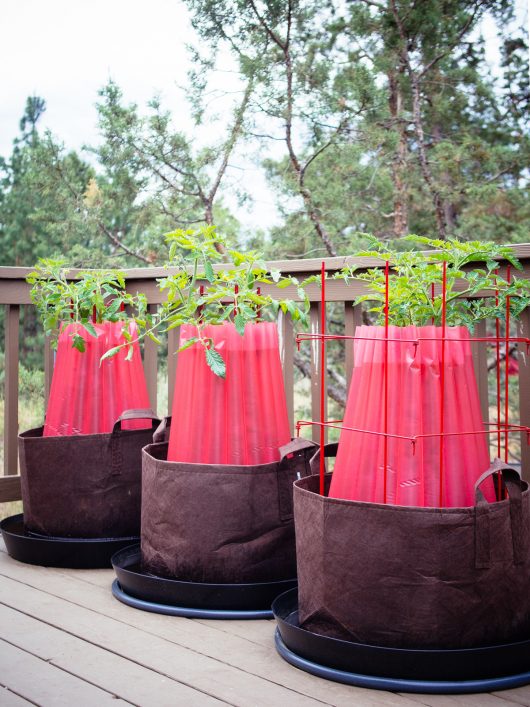
Despite some scary lows in recent weeks, I've got flowers and even tomatoes on the vine! I plan to remove the teepees the first week of July (as the plants are starting to outgrow them), and will be using traditional frost blankets for the rest of summer, as needed.
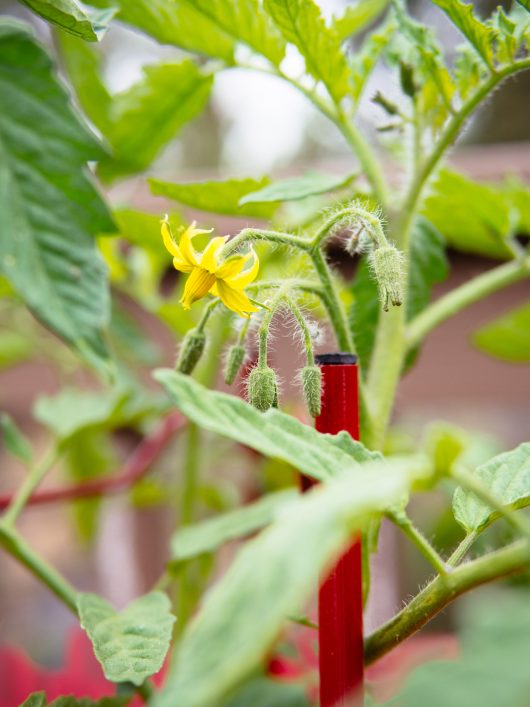
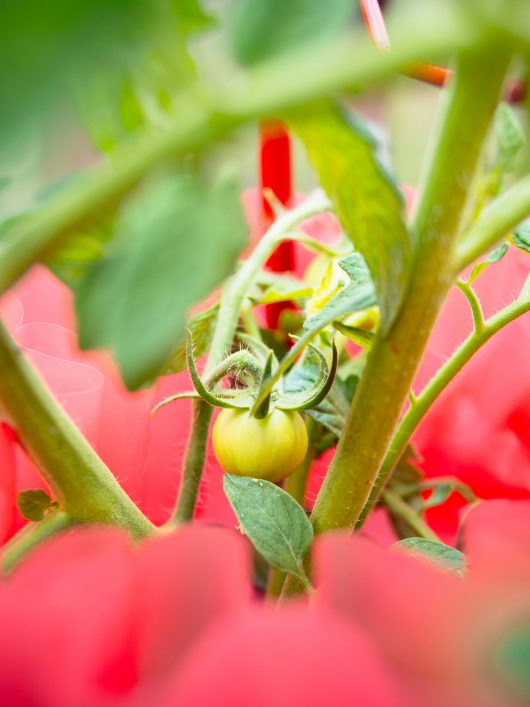
Two of the tomato plants are using these stacking tomato ladders from Gardener's Supply Company for support, while one is using their extra tall tomato cage. All of these plant supports are extendable, and I'll likely add the second tiers once I remove the teepees. I'll report back on how these tomato supports turn out in a few months — so far, so good.
I have two determinate tomato plants growing in this self-watering Gardener's Revolution tomato growing kit from Gardener's that came complete with potting soil, fertilizer, and built-in supports. (I also added optional casters on the bottom and a cover that protects against wind and cold.)
I was intrigued by the self-advertised efficiency of the system, and if it works well for tomato plants, I might transition it into a planter for fava beans or peas in the fall (as the supports can extend several feet high).
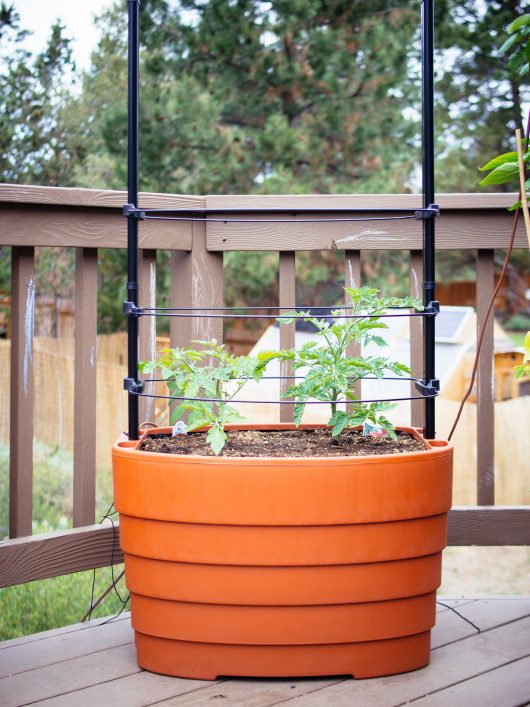
Next to it, I have a self-drip stacking tower from GreenStalk Garden. (And by the way, they are offering $10 off any of their tiered systems if you use promo code gardenbetty10 on their site). I'll eventually dedicate a whole post to it (as there's a lot to share about its watering and vertical growing capabilities), but the basic system involves five stackable planters, each with six "pockets" for growing plants. A large reservoir on top allows all the planters to be watered at once with one filling, so you don't have to water every individual pocket.
I added the GreenStalk mover and frost cover to my system, both of which are working very well with a fully loaded tower. The plants are still young (and I just sowed another round of seeds in the pockets this week), but I'm excited to see it in a few months when it's (hopefully) covered in a curtain of green!
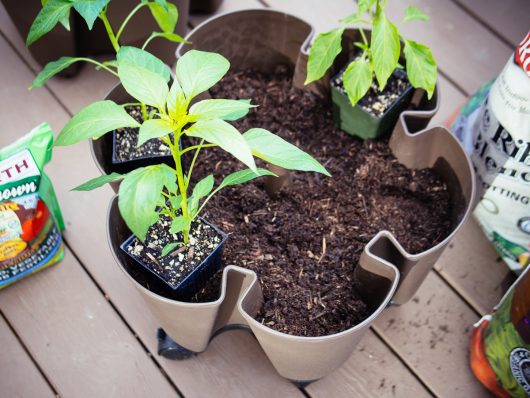
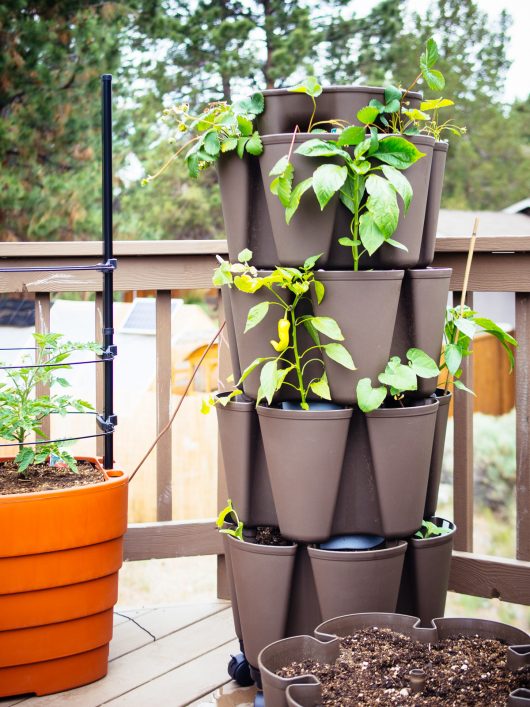
I currently have strawberries, peppers, bush beans, cucumbers, and summer squash in one tower, and need to transplant basil, shiso, and flowers in the last planter to stack underneath the strawberries. A second tower (placed in the opposite corner where the deck gets partial shade) will have some herbs and leafy greens. (You can see the full list of what I'm growing here.)
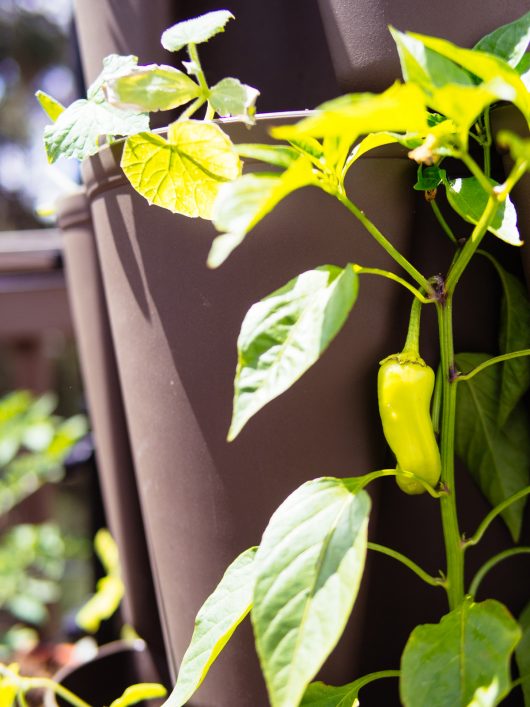
It's a small and humble garden, but I'm really enjoying the journey of starting over in a new climate. I'd considered planting a fall garden right after we moved in last October, but I'm so glad I waited. Just living here and learning how I use the space, watching the way the sun moves across our yard, and familiarizing myself with the ups and downs of Central Oregon weather has truly helped the garden survive and even thrive, despite dramatic temperature shifts.
This is, above and beyond, the most practical advice I can offer to anyone in the process of establishing a new garden. Take your time, learn the weather patterns, and exercise ample patience when it comes to starting seeds or hardening off your plants. (That last point, I cannot stress enough… the process of hardening off isn't just for seedlings, it's for any plant that has lived inside a heated home or insulated garage.)
I mean, it's almost July yet still feels like early spring as far as planting goes. I have an all new respect for cold-climate gardeners because anyone who grows in a cold climate is truly committed to the craft. The time and resources it takes to keep just a few plants alive outside makes my previous zone 10b garden look like a walk in the park! (Not knocking 10b at all, as that type of climate came with its own set of unique challenges.)
I'll be back with another update in mid-summer! Meanwhile, you can follow me on Instagram or Facebook to see how the garden progresses these next few weeks.
Gardening Sources
Root Pouch Boxer 20-Gallon Pots | Generic Pots Black Premium Plastic 25-Inch Saucer | Kozy Coats Plant Teepees | Gardener's Supply Company Stacking Tomato Ladders | Gardener's Supply Company Heavy Gauge Extra Tall Tomato Cages | Gardener's Supply Company Gardener's Revolution Classic Tomato Garden Kit | Gardener's Supply Company Planter Casters | GreenStalk Garden 5-Tier Vertical Garden Planter | GreenStalk Garden Vertical Planter Mover | Frost Protek Tall Plant Cover
The post It's Almost Summer! Here's An Update on the New Garden appeared first on Garden Betty.
Spring is here! And to help you figure out what to do with all those weird vegetables and parts you thought you couldn't eat, The CSA Cookbook makes an excellent addition to your cooking or gardening library.
from Garden Betty https://ift.tt/2ljlmcM
 Turn on your JavaScript to view content
Turn on your JavaScript to view content
No comments:
Post a Comment